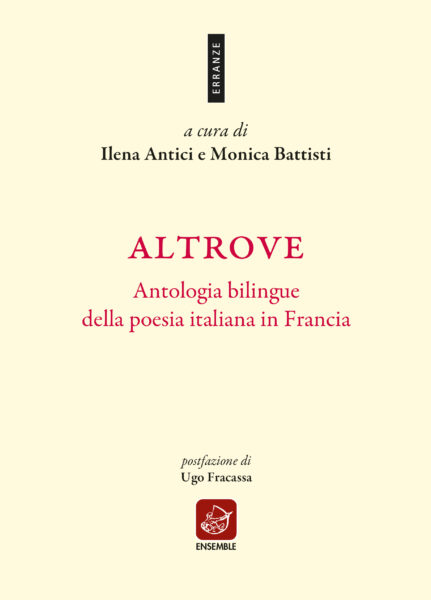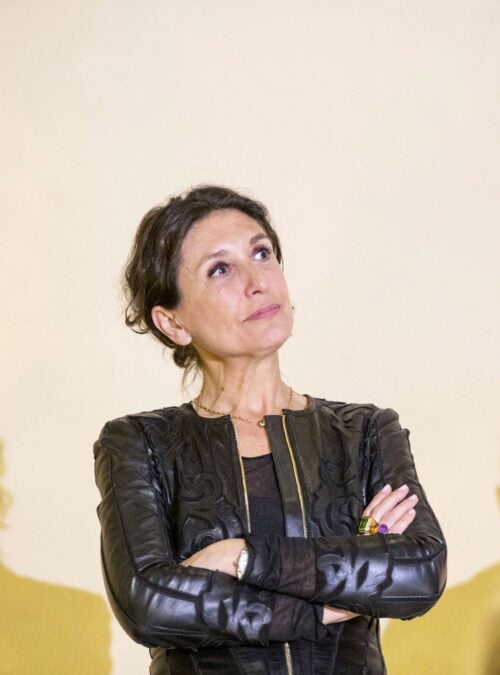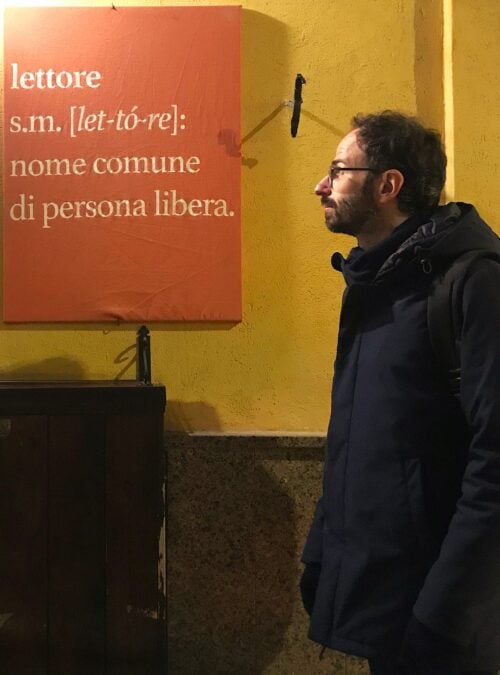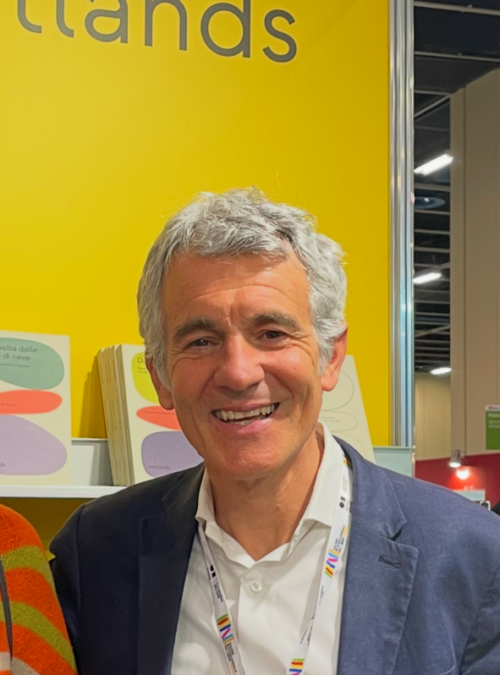Bilingual anthology of Italian poetry in France.
Interview with Ilena Antici and Monica Battisti
Author: Paolo Grossi

The volume Altrove (Elsewhere), edited by Ilena Antici and Monica Battisti, was recently published by Edizioni Ensemble in Rome. How did this publishing project come about, and in what context?
Ilena Antici. It’s worth pointing out that the context precedes the project, and that they are inseparable from each other, just as fertile ground leads to flowering. As Italians who have lived in France for many years, we are referring to our long immersion in the Italian intellectual milieu in Paris, a lively and diverse environment where cultural players, students, university researchers, bookshops and print and online journals rub shoulders. This dynamic space is the stage for a multitude of performances, meetings, readings and debates on the writing of Italians who, whether Italian by birth or by adoption, live or have lived on French soil. These include institutions such as the Tour de Babel and La Libreria bookshops, which are the epicentres of Italian literature in Paris, as well as the Italian Cultural Institute, not to mention blogs and university Italian departments.
In its precise and tangible form, this publishing project can therefore be seen as a bouquet of specimens harvested from this vast poetic humus. The collection, conceived and strongly supported by the Italian-speaking Albanian poet Gëzim Hajdari, complements two other anthologies recently published by Ensemble, which explore Italian poetic voices linked to England and Spain. While this poetic creativity is well known to Italian cultural players in France, it is struggling to find its place in Italy, for reasons that we attribute more to the dynamics of the publishing market than to the quality of the texts or the interest of readers. The fruit of our research, which took almost two years to complete, is the three hundred pages of the Altrove anthology, in which all the texts are published in Italian and French, to make them accessible to those who speak only one of these languages.
The invaluable support of Professor Ugo Fracassa of Roma Tre University, a specialist in comparative literature who has been working on migration literature for several years, was decisive in providing a theoretical framework for the project. His in-depth knowledge of the history of Italian language literature, both in Italy and abroad, and his generous collaboration, have enabled this anthology to become not only a key to historical reading but also the starting point for research that we hope will inspire other researchers. We are convinced that the writing of those who live in the in-between (between two languages, two countries) constitutes a significant opportunity for study in many respects. At first glance, these poems may be perceived as a narrative of the world; literature of testimony is currently a hotly debated topic, and lyric poetry in turn bears witness to a lived experience, without this autobiographical impulse getting in the way of the search for personal expression. However, it is clear that, more broadly, poetry always explores the universal human condition, made up of disorientation, nostalgia, desire, the quest for identity and inner struggles. What’s more, the linguistic and literary flows that feed this fertile breeding ground of poetic flourishes invite critics to question the authors’ influences, roots and links with their predecessors, in both the Italian and French literary traditions.
An anthology is, by definition, the result of a selection: what criteria guided you in your choice of authors and texts?
Monica Battisti. Before you can make a selection, you have to find something. That was the main aim of our collection: to offer a first overview of Italian and French poets who, for biographical reasons, oscillate between Italy and France, having chosen to settle or live across the Alps. In the absence of similar large-scale works to serve as a starting point, we have undertaken a search for contemporary poetic voices, even the most eccentric ones, while relying on the recommendations of personalities already firmly established in the Italian-French poetic and literary milieu, which testifies to the strength and solidarity of the cultural network between the two countries.
This collection brings together authors from both the historic waves of migration to France, motivated by economic and professional reasons, and the more recent ‘Erasmus generation’, attracted by the irresistible charm of Paris. In all, we have brought together 25 authors, ranging from Jean-Charles Vegliante (born in 1947) to Maddalena Bergamin (born in 1986), and from Pascal Gabellone (born in 1943) to Alfonso Maria Petrosino (born in 1981), via the intermediate generation of Mia Lecomte, Andrea Inglese and Flaviano Pisanelli (born in 1966, 1967 and 1973 respectively) – right up to the generation born around the year 2000. Generally speaking, it’s fair to say that the universities continue to play a significant role for these vagabond neo-clerics, stripped of their religious garb.
The texts were mainly published from the 1990s onwards, after an initial symbolic opening embodied by two great Italian writers who had lived in France during the second half of the twentieth century, Nella Nobili and Alba de Céspedes. The great ‘adopted French’ writers of the twentieth century, such as Giuseppe Ungaretti, under whose aegis our initiative falls, have not been included. Furthermore, publication in a volume was an essential criterion for our selection, although a few exceptions were accepted at the request of Gëzim Hajdari, director of the publishing house’s collection, which supports young authors and first works.
As for the selection of texts by each author, we have taken care to highlight compositions that evoke the condition of being in-between, whether from a thematic or linguistic point of view, or that illustrate specific realities linked to the place or culture to which they belong. At the request of Gëzim, who set the final number of compositions for each author, we have given more space to the more mature generations. However, it is essential to point out that not all the texts are of equal critical importance: for example, the sketches of May 1968 made by Alba de Céspedes from her house in the heart of Saint-Germain-des-Prés should be seen more as historical testimonies.
Inevitably, there are gaps in the reconstruction of such a dynamic journey through the ever-changing geography of French-Italian poetry. We are referring here to names that may have been forgotten despite our efforts, for which we bear sole responsibility; to the lack of a balanced gender distribution, which once again highlights the social ‘invisibility’ from which women poets suffer, making their identification all the more difficult; and to the inevitable constraints and editorial choices that impose sacrifices and readjustments dictated by factors beyond our control. We are thinking in particular of Anna Milani, an Italian and French-speaking woman poet who has lived in Montpellier since 2004, whom we only learned about too late and by pure coincidence during our visit to the Marché de la Poésie in Paris.
The poetic ‘voices’ assembled in this volume are very different from one another: does their origin in a very specific linguistic and cultural area, that of France, give them common traits? Or are there recognisable links (stylistic, poetic, etc.) with the main Italian poetic experiments of recent decades?
Ilena Antici and Monica Battisti. It is undoubtedly difficult to identify common traits between the twenty-five poets in this anthology and to discern a ‘typically’ Italian-French line, influenced by distinct literary currents. However, it would appear that the tributes to the Italian poetic tradition are real and visible. Our poets seem to refer both to the experimental second half of the twentieth century (such as Andrea Inglese) and to classical authors, in particular Eugenio Montale and Giuseppe Ungaretti, who figure prominently in the work of Pascal Gabellone and Giancarlo Pizzi. They also echo isolated voices, such as Dino Campana in the work of Christophe Mileschi, or Patrizia Cavalli in the poetry of Maddalena Bergamin.
Many poets have also revisited traditional poetic structures, such as ballads and sonnets, sometimes with surprising and original innovations. Think, for example, of the rhyming verses of Alfonso Petrosino, Filippo Bruschi and Pierluigi Lanfranchi. Some poet-translators also seem to have been influenced by the works they translated, as evidenced by the Dantesque resonances present in Vegliante’s writings. Furthermore, the younger generation, often expatriates, seem to be more receptive to foreign influences, including those of a non-literary nature. Alessandra Cava and Gabriele Stera, in particular, experimented with a blend of arts with a European and international dimension. In any case, the debate on literary origins is long and complex, and will be explored in greater depth elsewhere, particularly in the light of the ideas developed by Ugo Fracassa in his afterword to the volume. We would, however, like to stress that, in many poets, the ‘myth of Paris’ is perpetuated and expressed as it has been handed down through the French poetic tradition, from Baudelaire and Apollinaire to Céline and Prévert. This tradition was in turn filtered and reinterpreted by some twentieth-century Italian poets, such as Giorgio Caproni, who offers us this poignant reflection on Paris: ‘Non c’ero mai stato / M’accorgo che c’ero nato’ (Constatazione).










